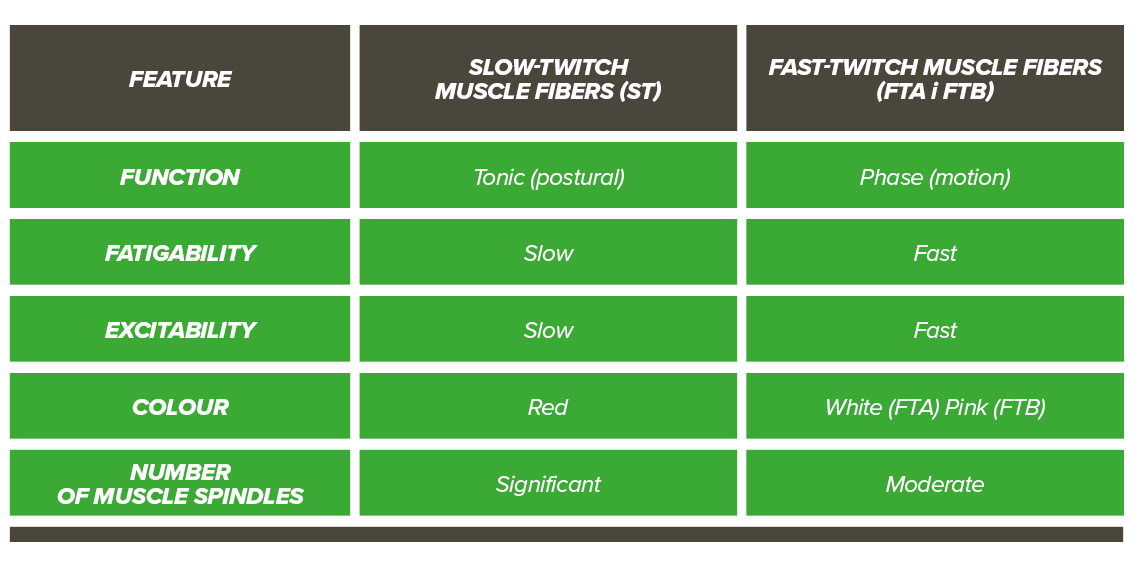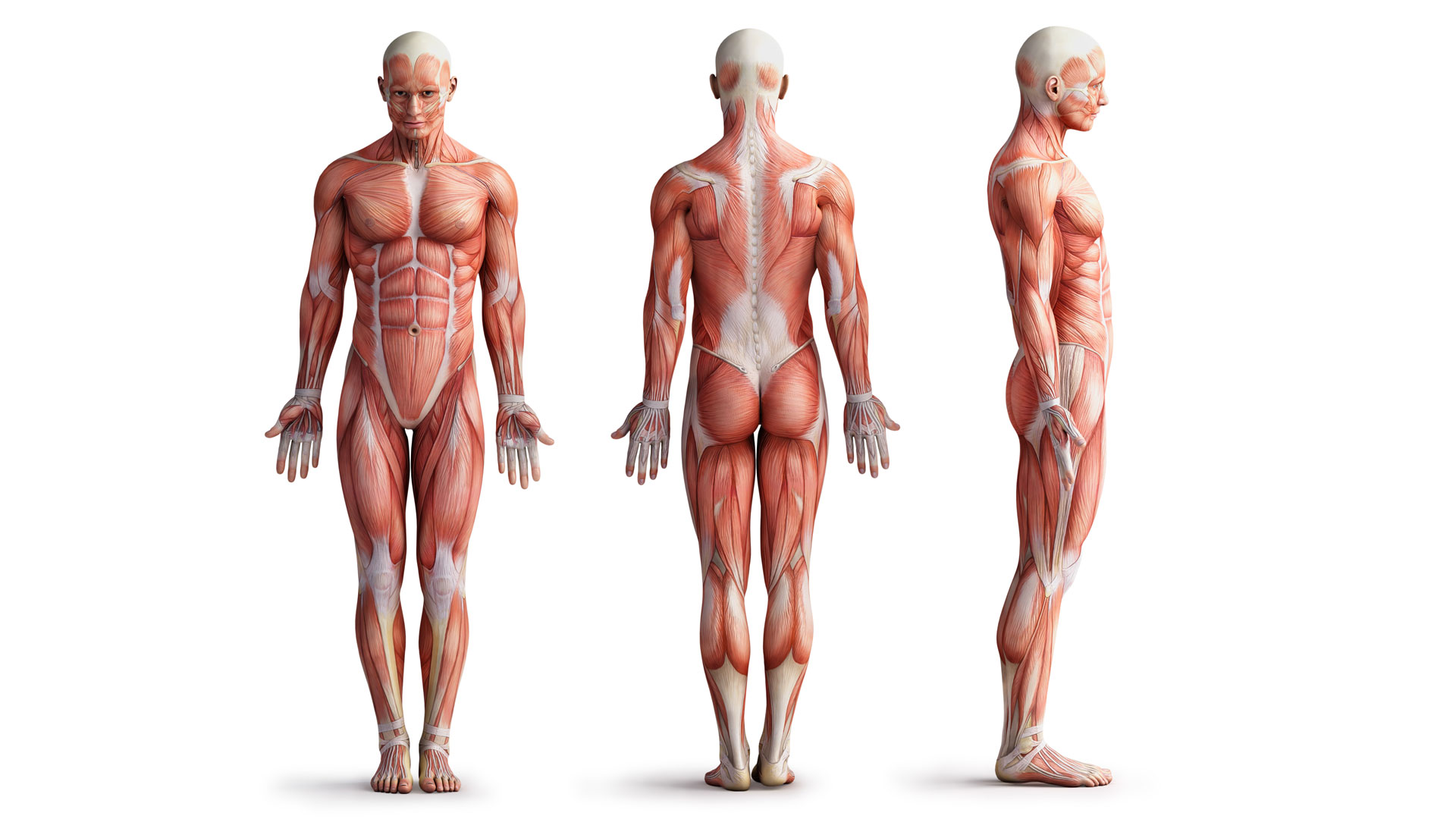What is the core?
By Core we define the postural (tonic) muscles of our body. These are muscles with a predominance of red fibers called slow-twitch. They are denoted by ST (slow-twitch). These fibers are characterized by a greater oxidative potential, which is associated with greater resistance to fatigue and the ability to work longer. For a broader look at the issue of the topic you should also know about the existence of white fibers (fast-twitch). These phase muscles are indicated by the abbreviations FTA and FTB. Their nature of work is characterized by a greater severity of anaerobic processes, which are faster to fatigue. It is important to know that our muscles are not made entirely of one type of fiber. In humans, the composition of muscles is mixed, and their affiliation to the tonic or phase group is determined by the predominance of one fiber over the other. This is an individual trait that may indicate a predisposition to a specific sport discipline. The summary of previous information is included in the table below:

Facts and myths
The muscles referred to in this article (postural/tonic) are: deep spine (backbend rectifiers), quadratus femoris (descending), levator scapulae, lateral neck, sternocleidomastoid, pectoralis major (clavicular part), quadratus lumborum, scalenus, biceps brachii, iliac and lumbar spine, rectus femoris, tensor fasciae latae, sciatic-tibial group muscles, adductor longus, magnus and brevis; gracilis, piriformis muscle, triceps of calf.

Perhaps many of the names mentioned above are known to you. Perhaps many of you are shocked that you have not found abdominal muscles here. After all, "core" is commonly understood as torturing hundreds of repetitions of crunches and "planks" for hours. Abdominal muscles are important in everyday functioning, but from the scientific point of view they are fast-twitch (phase) muscles. Nowadays, the word "core" is associated only with "planks" and advanced abdominal exercises. I hope that I have resolved your doubts about the etymology of the word in the strength training nomenclature.
Muscle contractures
Returning to tonic muscles - most of us overtrain individual muscle parts in the gym or neglect others. I'm not just talking about their regular training, but also the need to stretch. The contorted and unstretched pectoralis muscles have a strong influence on our posture by rotating the humerus inwards which is one of the reasons for the bent posture. You do not even have to go to the gym to contract them. All you need is a daily work at the desk in a closed position (elbows on the counter, head staring at the monitor). Sitting work is also not conducive to the muscles of the ischio-shin group. When sitting for many hours, these muscles and the ilio-lumbar muscles become contusive. Getting up, the contorted sciatic-tibial group places our pelvis in the rear-inclination which may cause loss of lordosis in the lumbar region of the spine. The disappearance of natural curvatures of the spine is, among others, the disappearance of its amortization function. One of the iliac-lumbar spurs is located on the side surfaces of the vertebrae. Contraction of this muscle on the one hand can cause significant pain in the lumbar region, because the muscle pulls its trailers in the side direction. This is one of the most common reasons for lumbar spine pain. A simple stretching exercise solves the problem.

Forward Head Posture
Awareness of our anatomy and the influence of freezing in one position on our body can protect us against many dysfunctions of the musculoskeletal system. Let us now turn to the subject of the FHP - Forward Head Posture. Do you know what damage can be done by browsing content on your smartphone constantly? The bigger the head's inclination angle while staring at the phone, the greater the force on our neck muscles.
This is respectively:
• 0 ° (head straight) - 4.5-5.5 kg,
• 15 ° - 12kg,
• 30 ° - 18kg,
• 45 ° - 22kg,
• 60 ° (the head is strongly inclined down) - 27 kg.
Thus, the deeply inclined head is a force of about 27 kg, which extends our ridge extensors in the cervical spine and contorts the sternocleidomastoid muscles that in the long run results in a forward extended head. Of course, it can be repaired using properly selected strengthening and stretching exercises.

Conclusions
Before starting the training, it is worth consulting an experienced personal trainer who will be able to pick up not only the superficial imperfections of your figure but also the defects of posture and point out to you what needs to be improved first. If you want to enjoy a healthy spine and body, you should start living consciously, move more and pay attention not to spend most of your time remaining motionless, freezing for a few hours in one position.





